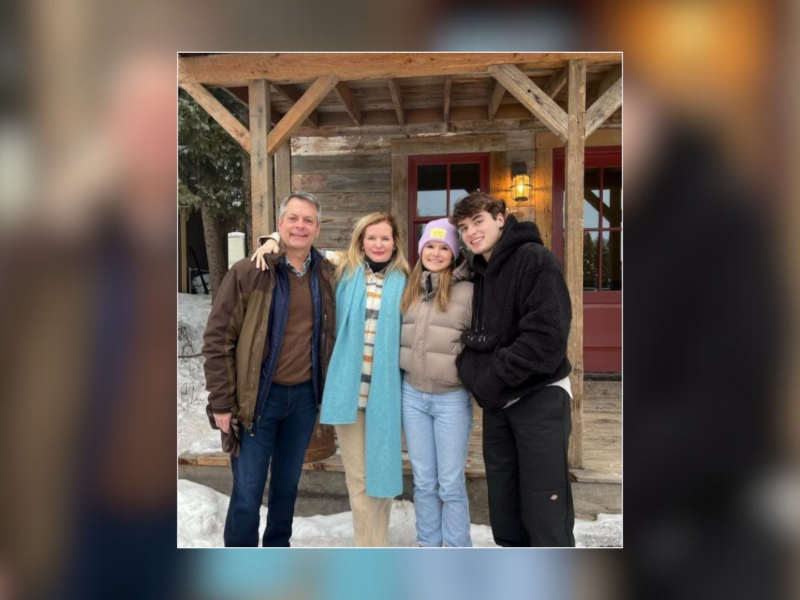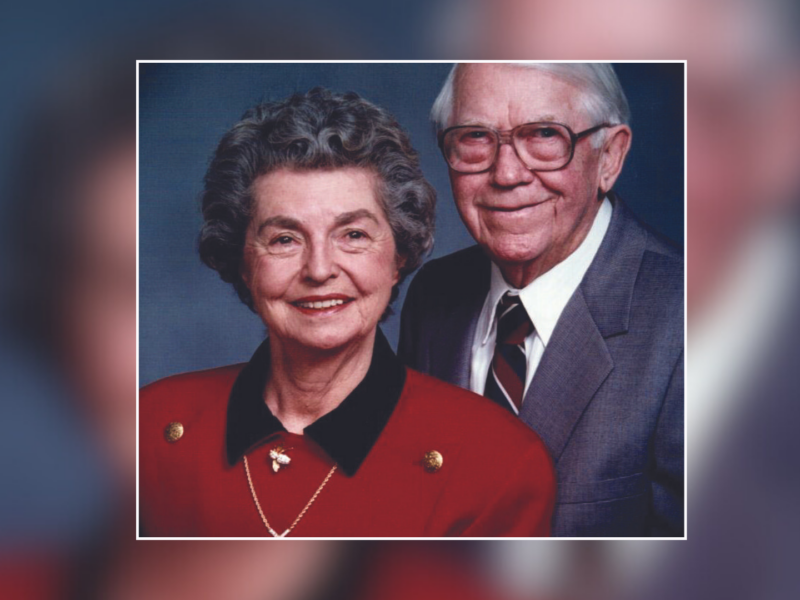
History & Heritage: A Timeline of Hispanic People in Charlotte
The journey of Hispanic people to Charlotte started 483 years ago with the voyages of the Spanish explorers through the territories of the Carolinas. Spanish was the first European language heard and spoken in today’s Charlotte land. As we reflect on this chronology, we aim to reveal the history of the community in Charlotte composed of, as of 2023, 21 nationalities and 170,000 people.
SPANISH EXPLORERS
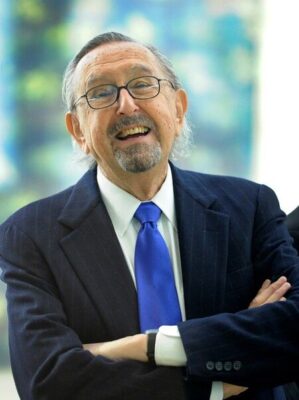
Ceaser Pelli, who designed the Bank of America Tower, pictured in Bilbao, Spain, in 2012. (Photo: West/Reuters | Bloomberg)
In 1540, an expedition of Spanish explorer Hernando De Soto – the first European to encounter the Mississippi River – traveled to Chalague, located in the southwest of Charlotte.
On Sept. 17, 1567, Spanish explorers led by Captain Juan Pardo visited the native village of Otari in present-day Charlotte.
Pardo founded Fort San Juan, the first European settlement in the interior of North Carolina, at Joara, a Native American village near Morganton. Pardo’s visit occurred 40 years before Jamestown and 53 years before the arrival of the pilgrims.
De Soto’s exploration in Charlotte preceded by 67 years the settlement of Jamestown in 1607 by the English on the border between Virginia and North Carolina and by 80 years, the arrival of the pilgrims at Plymouth Rock in New England in 1620.
The Hispanic presence in Charlotte occurred 79 years before the first enslaved Africans arrived in Virginia in 1619.
19TH CENTURY
In 1848, the war between the United States and Mexico ended after two years of hostilities with the defeat of the Mexican forces. The 11th U.S. president, James Polk, led the country during this conflict. He was born in the municipality of Pineville in Mecklenburg County.
The military hat of the defeated Mexican president, Antonio Lopez de Santa Ana, rests at the state historic site dedicated to President Polk.
In 2020, the Hispanic population in Pineville reached 21 percent of the city’s inhabitants, where many Mexican businesses flourish.
20TH CENTURY
Ecuadorians were the Latino pioneers who settled in Charlotte in the 20th Century. In 1948, 75 years ago, the Espín family arrived, followed by the Peralta family.
In the early 1960s, Puerto Ricans who retired from military bases in North Carolina settled in the Charlotte region. Likewise, Cubans fleeing Castro’s Revolution made the Queen City their new home.
SISTER CITY
In 1962, the Peruvian city of Arequipa officially became Charlotte’s first sister city.
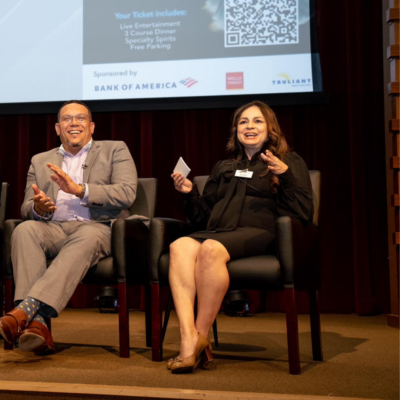
Federico Rios, FFTC’s senior vice president of the Robinson Center for Civic Leadership and Gris Bailey, Latin American Chamber of Commerce of Charlotte’s president & CEO, spoke at Economic Outlook 2023. The LACCC was founded in the 1990s to foster economic growth.
In 1981, the State Department approved the creation of an honorary Mexican consulate in Charlotte after rejecting the request three years earlier because there were not enough Mexicans living in North Carolina. During the 1980s, a small group of South American and Caribbean families made up most of the Latino community in Charlotte.
The 1990 decennial census counted 6,693 Hispanics in Mecklenburg County. In the early 1990s, Cubans, Colombians, Peruvians, Ecuadorians, Venezuelans and Chileans founded several organizations, including:
- The Latin American Coalition – a community of Hispanics, immigrants and allies who promote the full and equal participation of all people in the civic, economic and cultural life of North Carolina through integration, education, celebration and advocacy.
- The Latin American Chamber of Commerce of Charlotte – an organization that fosters the economic growth and development of the Latin American business community in Charlotte.
- Latin Americans Working for Achievement – Formerly known as The Latin American Women’s Association, Charlotte’s first organization established to focus on the Latino student through the tools and resources needed to become self-sufficient, integrated and contributing members of the community and workforce.
- The Charlotte Latin American Council – Known as Enlace, a network of Latino community members who have the opportunity to exchange information and build partnerships in the community.
Between 1989 and 1992, the building of the Bank of America Tower – designed by Argentinean César Pelli – initiated the wave of Mexican and Central American immigrants in Charlotte who joined the construction industry.
U.S. authorities and representatives of the Mexican government cooperated in developing data and ways to protect the immigrant builders of the skyscraper, then the Nations Bank Tower.
In 1994, Aura María Gavilan and Julian Posse started Charlotte’s first Spanish-language radio station, Radio Líder.
21ST CENTURY
In 2000, the decennial census counted 44,871 Latinos in Mecklenburg County.
The Sept. 11, 2001, terrorist attacks sparked an anti-immigrant sentiment that also permeated North Carolina, as well as Charlotte.
In 2002, Dan Ramirez, of Colombian origin, affiliated with the Republican Party, was the first Latino elected official. He won a seat on the Mecklenburg County Board of Commissioners.
The opening of the first Compare Foods store in Charlotte happened in 2004. And real estate market prices in the Queen City – lower than those in Florida, New York, New Jersey, Connecticut, Pennsylvania, and Illinois – brought an influx of Caribbean immigration of people of Dominican, Puerto Rican and Cuban origin.
In 2005, then-Mayor Pat McCrory established a commission to study the effects of immigration on Charlotte. The study was preceded by a 1992 report the city produced about Immigrant Integration. That same year, Mecklenburg Commissioners Bill James, Jim Puckett and Dan Bishop proposed a plan against undocumented immigrants, which in its preamble, stated that the irresponsible actions of “illegals” were causing the deaths of American citizens.
287G
In 2006, the Mecklenburg County Sheriff’s Office and Immigration and Customs Enforcement initiated the 287g deportation program at the local jail, which removed about 17,000 undocumented immigrants (97 percent Latino) from Charlotte.
In April 2006, more than 10,000 immigrants rallied in the city’s Marshall Park to reject the federal Sensenbrenner bill, which criminalized undocumented immigrants.
In 2010, a soccer game of the Mexican national team against Iceland drew more than 63,000 fans to the Bank of America stadium.
In 2008, Mecklenburg Commissioner Bill James compared undocumented immigrants to prostitutes and drug dealers.
In 2010, the decennial census counted 111,944 Hispanics in Mecklenburg County.
To respond to the devastating effects of the 287g deportation program, the group Familias Unidas, composed of undocumented immigrants in deportation proceedings, was created in 2012. The organization prevented the removal of dozens of immigrants.
At the beginning of 2015, after more than a year of work, the Charlotte Immigrant Integration Task Force delivered its conclusions to the City Council, advocating for immigration reform and a series of requests to favor the foreign population settled in the city and North Carolina.
In 2016, Charlotte’s Central American community was shocked by ICE’s arrest of Salvadoran, Honduran and Guatemalan teenagers who had arrived in a wave of immigration in 2014.
41,000 HISPANIC STUDENTS AT CMS
In 2015, the NUEVOlution exhibit on the history of Latinos in Queen City and North Carolina was on display at the Levine Museum of the New South.
In June 2017, Cox Media Group launched Telemundo Charlotte, the first full-power high-definition Spanish-language local broadcast station in the Charlotte DMA.
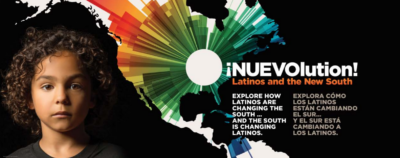
The NUEVOlution exhibit on the history of Latinos in the Queen City debuted at the Levine Museum of the New South in 2015.
On Nov. 6, 2018, politician Susan Rodriguez-McDowell became the second person with Hispanic roots to hold elected office by ballot in the Charlotte region. Rodriguez-McDowell, of Cuban and Puerto Rican ancestry, defeated Bill James, the undocumented’s foremost critic, who held the Mecklenburg County Commissioner seat for District 6 for 22 years.
In December 2018, Sheriff Garry McFadden eliminated the 287g deportation program.
In mid-2019, the City of Charlotte created an office dedicated to the immigrant population – led by Federico Rios, who worked for 5 years as the Assistant Director Office of Equity, Mobility and Immigrant Integration – being the first to hold this title. Rios currently serves as Foundation For The Carolina’s senior vice president of the Robinson Center. In the fall of that same year, the number of Hispanic students surpassed the white enrollment in the CMS School District, with 41,000 students.
Between 2019 and 2020, El Salvador and Honduras consulates opened in Charlotte, with primary jurisdiction in the Carolinas — the first consular representations in 250 years of the city’s history.
2020
The 2020 Census established Mecklenburg’s Hispanic population at 170,000. For the first time, through intervention by the Fiestas Patrias group, the City of Charlotte, Mecklenburg County and the local Board of Education made official proclamations and citations to celebrate Hispanic Heritage Month.

Manolo Betancur, owner of Manolo’s Latin Bakery, was among 178 local businesses to receive a combined $5.9 million in grants as part of Wells Fargo’s Beyond Open program, which was administered by FFTC.
Authorities announced in 2022 the eventual demolition of Arequipa Park, built in the 1970s, due to a plan to create a new building to house Mecklenburg’s main public library.
The 2022 U.S. Census American Survey projected the Mecklenburg County Hispanic-Latino population in the following numbers: Mexicans, 58,394; Central Americans, 51,083; South Americans, 19,713; Caribbeans, 27,992.
In 2023, Charlotte experienced a wave of immigrants from South America and Central America. Venezuelans, Colombians, Ecuadorians, Hondurans, Nicaraguans and Guatemalans come from the Southern border.
As we look back on the 483-year journey of Hispanics in and around Charlotte, we are reminded of the profound and enduring impact this community has had on our city’s history: From arrival of early Spanish explorers to the diverse community of 21 nationalities that now calls Charlotte home as of 2023.
At Foundation For The Carolinas, we have had the privilege of witnessing the growth of numerous organizations and initiatives dedicated to supporting and celebrating the Hispanic community. As we move forward, FFTC remains committed to fostering inclusivity, equity and opportunities for all residents of Charlotte, including our cherished Hispanic neighbors.



